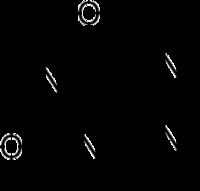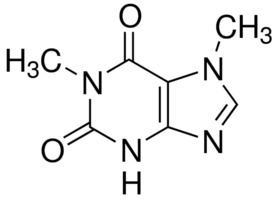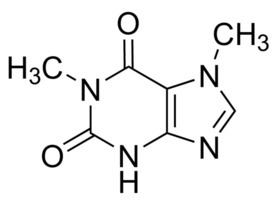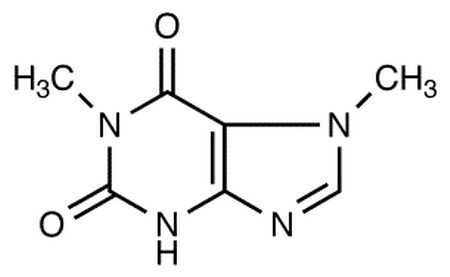Formula C7H8N4O2 | Molar mass 180.16 g/mol | |
 | ||
Paraxanthine, or 1,7-dimethylxanthine, is a dimethyl derivative of xanthine, structurally related to caffeine. Like caffeine, paraxanthine is a psychoactive central nervous system (CNS) stimulant. It possesses a potency roughly equal to that of caffeine and is likely involved in the mediation of the effects of caffeine itself.
Contents

Production and metabolism

Paraxanthine is not produced by plants and is only observed in nature as a metabolite of caffeine and theobromine in animals. After intake, roughly 84% of caffeine is demethylated at the 3-position to yield paraxanthine, making it the chief metabolite of caffeine in the body.

Certain proposed synthetic pathways of caffeine make use of paraxanthine as a bypass intermediate. However, its absence in plant alkaloid assays implies that these are infrequently, if ever, directly produced by plants.
Physiological effects
Paraxanthine has a number of physiological effects on animals:

Toxicity

Paraxanthine is believed to exhibit a lower toxicity than caffeine. While blood levels commensurate with average intake appear to be fairly innocuous, high blood concentrations of paraxanthine have been linked to miscarriage in pregnant mothers.
